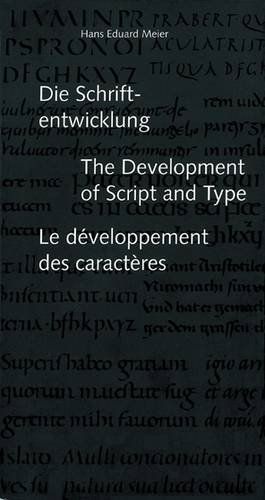What are the main calligraphic hands? And how do I find my own personal style?
Want to learn about calligraphy styles?
On this page you’ll find information about calligraphy styles, how to find your own, historical references and much more; Let's dive in together!
1. How can I find my own calligraphy style?
In my opinion, your own style at anything comes after doing ‘that thing’ for a long time. You know the rules upside down and inside out till you bend them to do what you want with them.
Picasso is attributed with saying “Learn the rules like a pro, so you can break them like an artist” and I have applied this philosophy on my own work.
1.1 “You gotta do a lot of stuff before you can make stuff like yourself” by Timothy Goodman.
I love Timothy Goodman’s work and he talked wisely about this subject:
“You gotta make a lot of stuff before you can make stuff like yourself.
In my travels, I meet a lot of graphic designers and I’m always so surprise to hear how many of them want a ‘style’ (wether is a good or bad idea to develop a ‘style’ is another argument entirely). They think it will bring them more opportunity or more notoriety or more money, and in some ways, they’re right of course. However you can’t go actively looking for a ‘style’. You have to let it come to you, you have to stumble on it. And the only way you do that is with time and effort and letting your own sensibilities and personality come through.
If you are a maker, and you’re interested in making, then you have to make a lot of stuff for a long time; you have to play and be curious and experiment with many ‘styles’. Then, maybe if you stumble on a ‘style’ that is authentic to you, you can go ahead and let it kill you”
In my own words “you gotta make a lot of shit before you can make shit like yourself”.
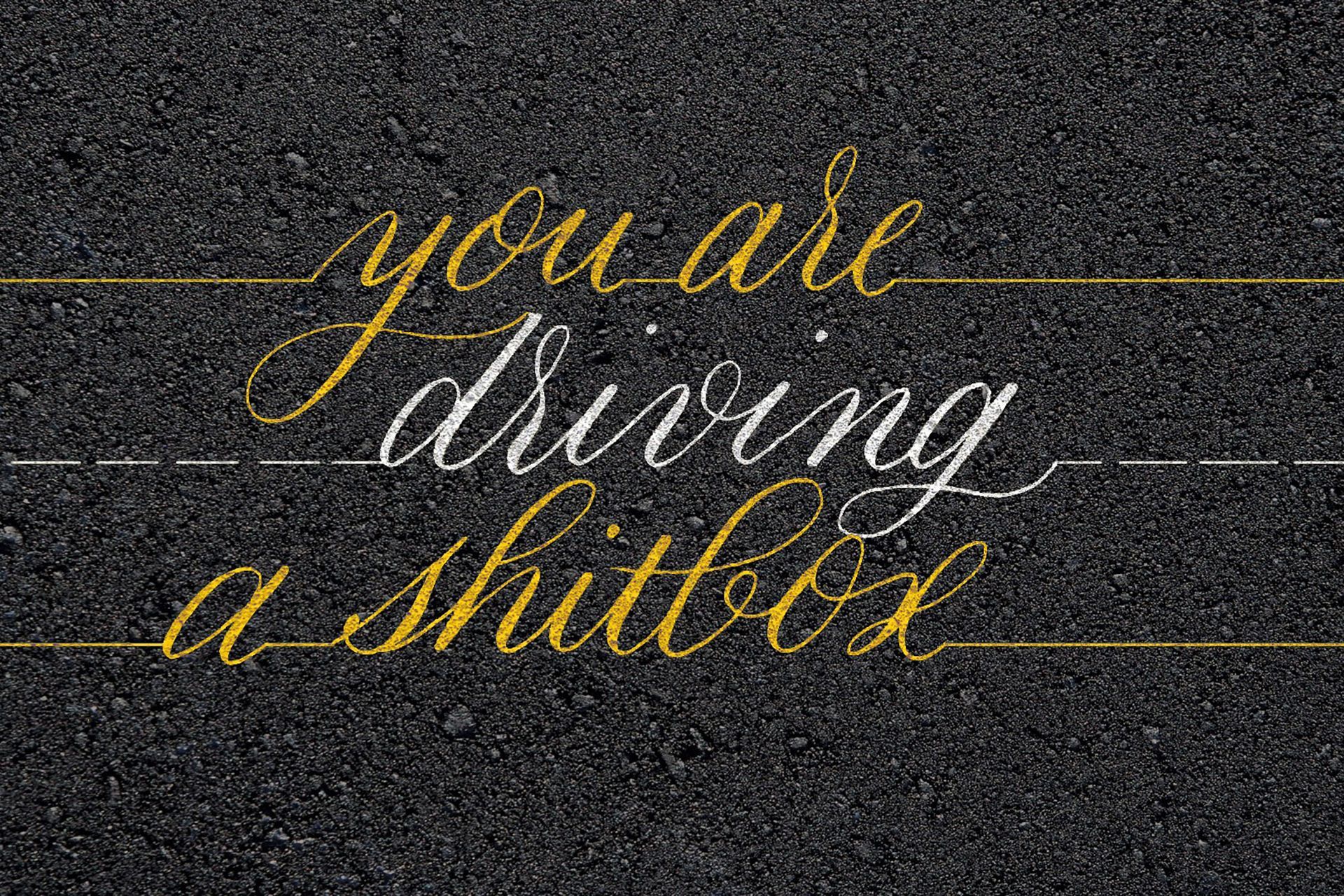
1.2 “Six steps to creating a personal style” by Jessica Walsh.
If you are very interested in this subject, I also recommend this article called “6 steps to creating a personal style” by Jessica Walsh.
2. Is Gothic calligraphy & Blackletter the same thing?
The term Gothic refers to all art forms within this specific historical period, bet it architecture, sculpture, fashion, painting and of course, calligraphy.
The term Blackletter only refers to letterforms, so we can totally use the term Gothic calligraphy or Blackletter interchangeably.
Blackletter, is a style of calligraphy that originated in Western Europe during the Middle Ages, around the 12th century, and was widely used until the 17th century. It is characterised by its sharp, angular forms, dense and dark appearance, and decorative, ornate letter shapes.
2.1 Gothic Calligraphy key attributes
- Angular strokes: Gothic letters are created with straight, vertical, and some diagonal lines, giving them a highly structured and modulated look.
- Thick and thin contrasts: The use of a broad-edged pen creates a stark contrast between thick vertical strokes and thinner horizontal strokes.
- Dense spacing: Letters in Gothic script are often written close together, resulting in a compact and heavy-textured appearance on the page.
- Distinct letterforms: The letters tend to have a "fractured" or broken look, with angular, sharp corners instead of smooth curves.
- Elaborate capitals: Gothic calligraphy often includes elaborate initial capital letters, which can be highly decorative, sometimes much wider and detailed.
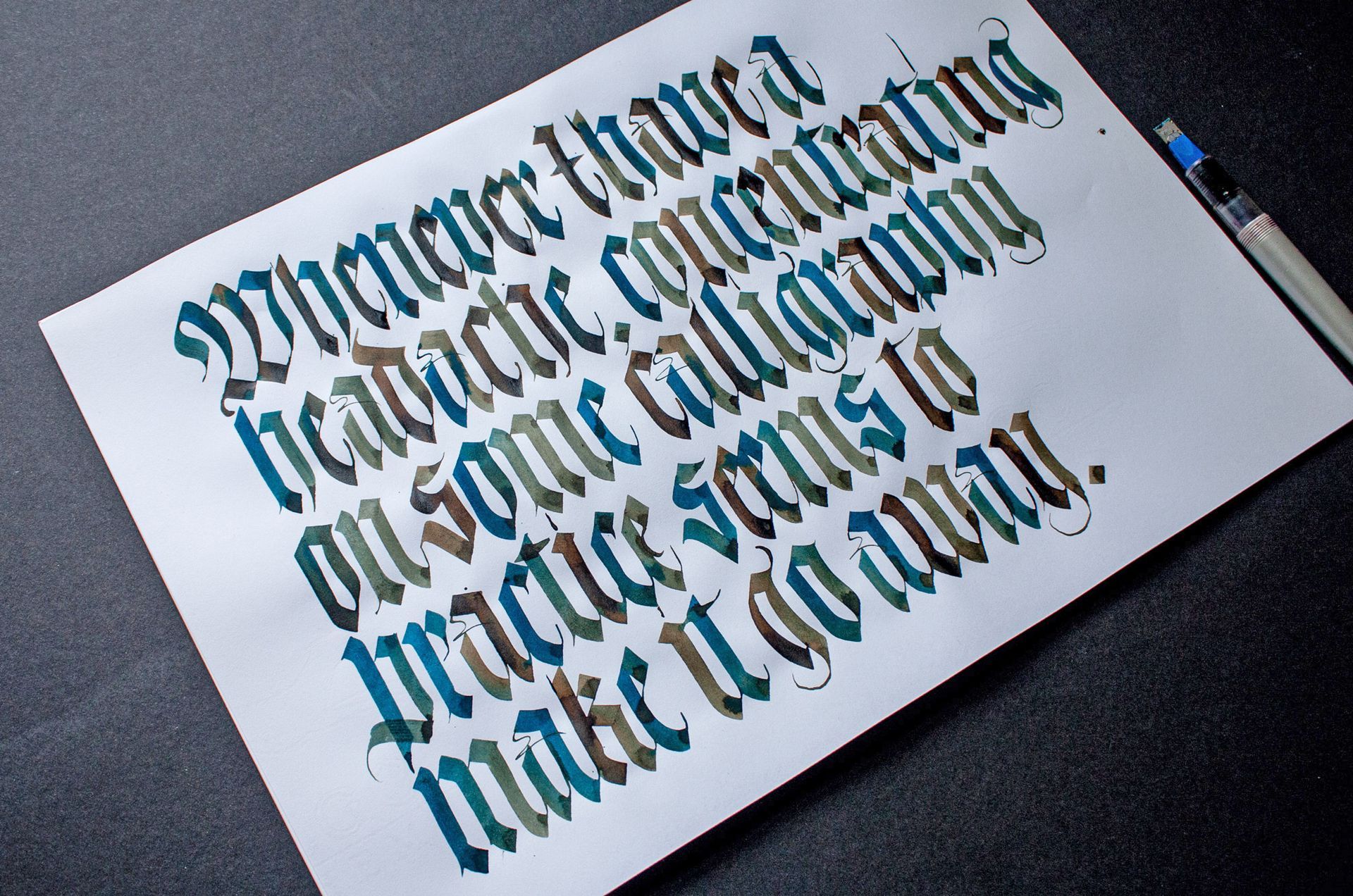
2.2 Gothic calligraphy variations
- Textura (Textualis): The most rigid and formal style, with very consistent, narrow letter shapes.
- Schwabacher: Rounded, wide letterforms compared to the angular Textura style. With lower contrast and a distinctive ‘o’ it was replaced by Fraktur as the dominant German blackletter style in the 16th century.
- Fraktur: A more decorative and flowing version of Gothic script, which became prominent in Germany.
- Rotunda: A rounder and softer variation of Gothic, used particularly in southern Europe.
Gothic calligraphy was used extensively for religious manuscripts, legal documents, and early printed books. While it's less common in modern everyday use, it remains popular in artistic works, beer labels, music, typography with a lot of attitude, and for historical and decorative purposes.
3.
What is the difference between calligraphy and handwriting?
In my opinion, there two main differences between calligraphy and handwriting:
3.1 Speed
In our contemporary context, handwriting is used to transfer quick ideas/notes to a piece of paper or screen. Nowadays, we write by hand less and less, which is affecting the education system and the way children learn to write. An important goal for handwriting is speed while experiencing pain-free motor skills.
In the Golden Age of Writing Masters, many of the calligraphic examples we observe are part of copybooks advertised under the name of “writing” and not calligraphy. These copybooks were targeted at students getting ready for the business world be it trading, commerce, accountancy, arithmetics, cartography and so forth. Writing was an important skill to get employed, as well as a social reflection of your education and social status.
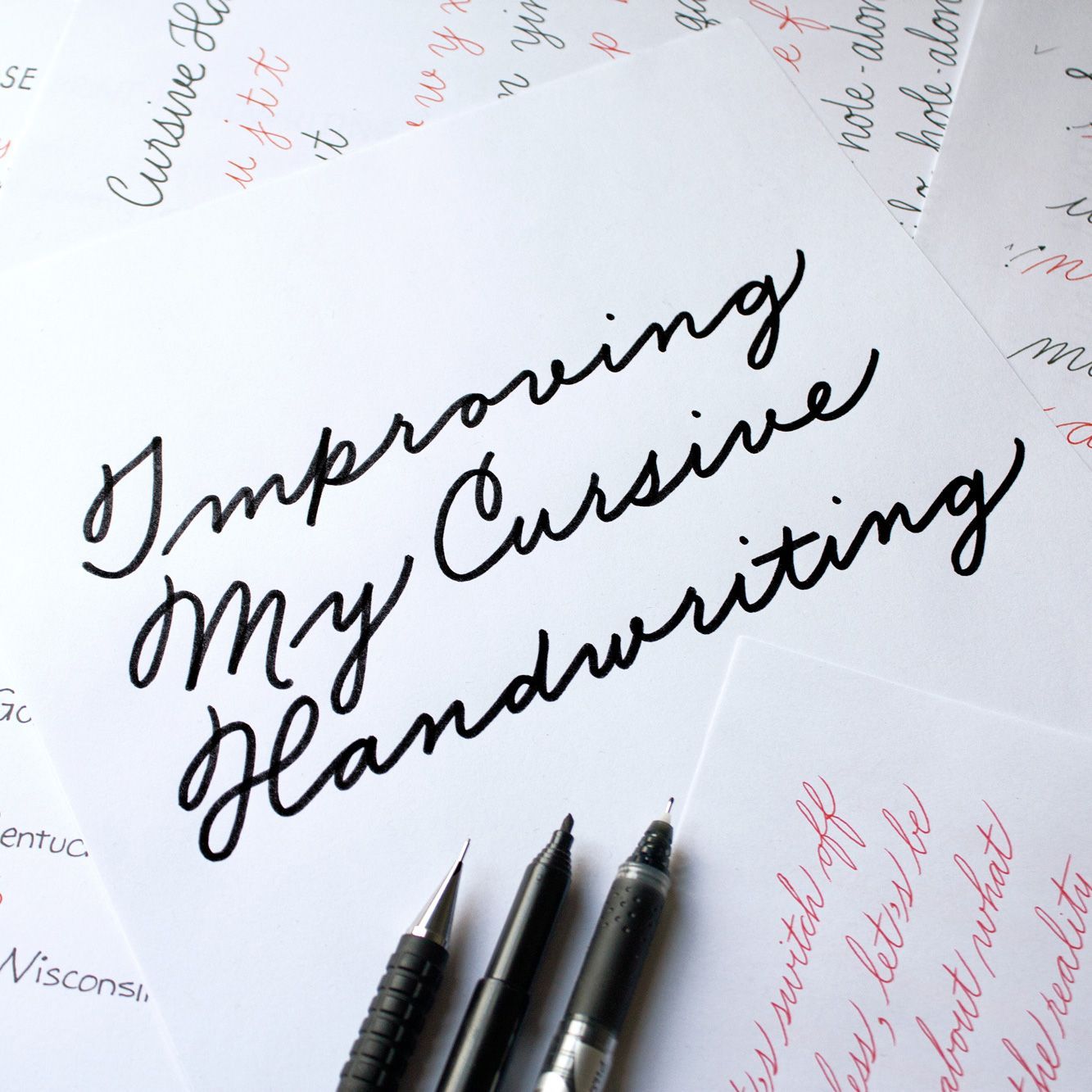
3.2 Usage
Calligraphy is the art of writing letters, often created with specific tools like broad-edge nibs, pointed pens, brushes, or quills. The term comes from the Greek words kallos (beauty) and graphein (to write), meaning “beautiful writing”. The word calligraphy appears later on in history.
In our modern context, calligraphy is focused on the formal aspects of letterforms instead of on the speed to create them. Some calligraphers may use speed to enhance the vibrancy and energy of the piece, but it is not a requirement imposed business or commercial needs.
In today’s context, calligraphy may be commissioned for an official document, a certificate, a celebratory event, an advertising campaign, a self-generated artwork or as a branding asset.
4.
What is the difference between handlettering and calligraphy?
The main difference is that calligraphy is the art of writing letters and handlettering is the art of drawing letters.
Sometimes, the line between the two disciplines can be confusing, as some creatives prefer to refer to their practice as lettering, why? Because it sounds more contemporary, as the word calligraphy can have some old-school and/or religious connotations, and creatives prefer not to be associate it with them.
4.1 Calligraphy vs. handlettering
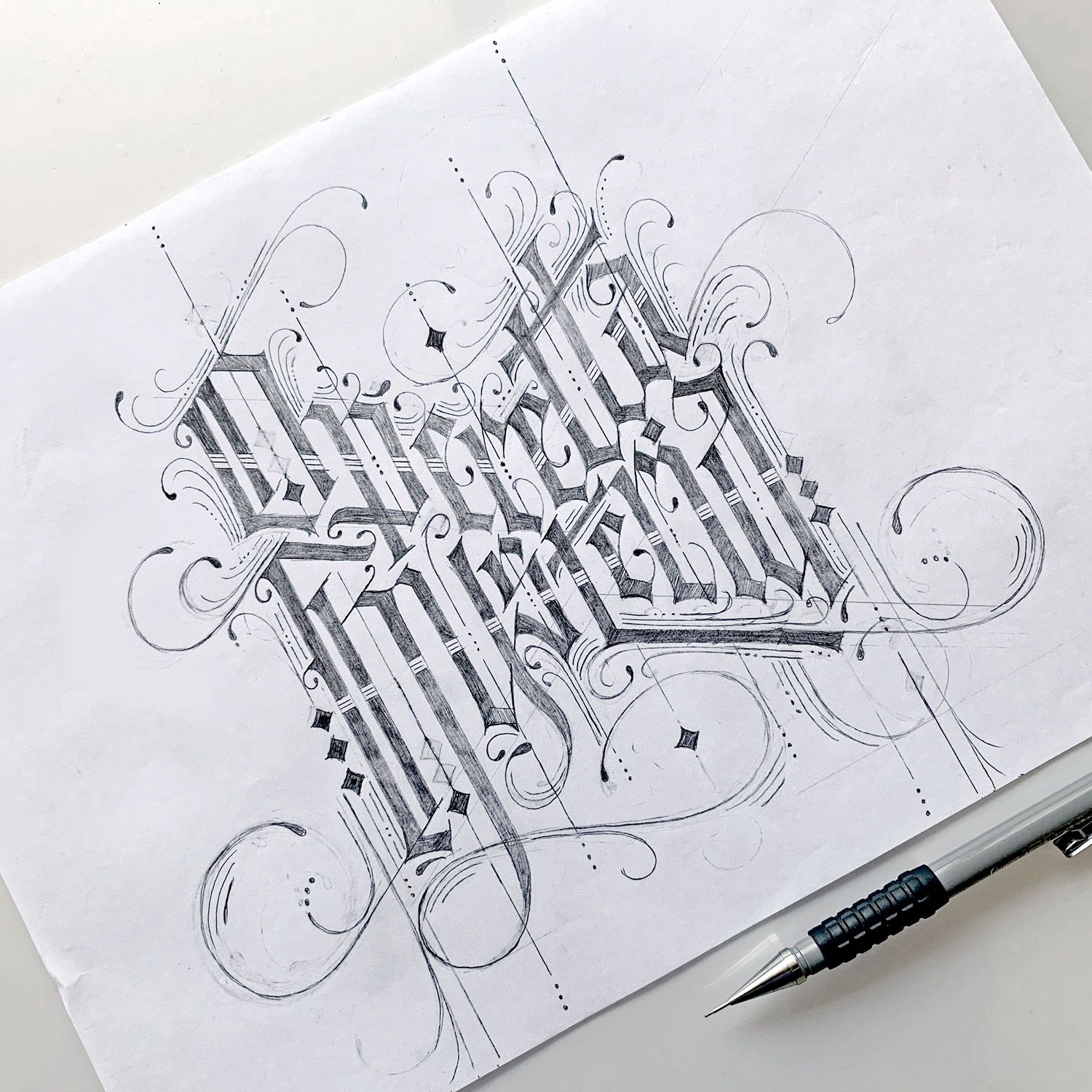
In any case, if what you are creating is formed by strokes with minor retouching, and there is a rhythm and flow with your writing tool, then you are creating a calligraphic piece.
If what you are creating is formed by strokes closer to a drawing exercise than a rhythmic act of writing, with several rounds of retouching, erasing, finessing, erasing again… then we are talking about lettering. And keep in mind that in some cases, the tool used to execute the hand lettering may not be obvious at all!
5.
What are the main calligraphy styles?
Below you'll find common scripts —also called book hands or calligraphy styles— executed with broad-edge pens and contemporary pointed flexible writing tools.
If you want to dive deeper into this topic, I very much recommend purchasing “The Development of Script and Type” by Hans Eduard Meier in English or Spanish. This book, first published in 1959, remains a key reference work to this day. Passionate about calligraphy and steeped in the shapes of scripts and their evolution, Hans Eduard Meier explains, through detailed examples, the diverse forms the Latin alphabet has taken from Antiquity to the present day.
My second recommendation is “Foundations of Calligraphy” by Sheila Waters; and my third one is “The ABC of Custom Lettering” by Iván Castro. You’ll find many more recommendations on my calligraphy books section.
5.1 Contemporary broad-edge calligraphy styles

These are some common calligraphy styles —also called calligraphic hands— currently executed with a broad-edge writing tool:
- Roman Capitals
- Rustica or Rustic
- Uncial and Half-Uncial
- Insular or Celtic calligraphy
- Carolingian
- Blackletter or Gothic Script which includes: Rotunda, Fraktur, Textura/Textualis and Schwabacher.
- The Humanistic Minuscule
- Cancellaresca, Chancery or Italic calligraphy
- Gothicized Italic
- Bâtarde or Bâstarde
- Neuland calligraphy
- Casual Brush Lettering
Below, you'll find an introduction to Neuland Calligraphy using a bamboo pen and liquid watercolours. Additionally, if you want to make a calligraphy pen out of bamboo, you can watch this tutorial.
5.2 Intro to Neuland Calligraphy Tutorial
5.3 Contemporary pointed pen calligraphy styles
This is a short list of styles that are currently executed using a pointed flexible tool, be it a metallic nib, a pointed brush or a brush pen.
- Copperplate
- Spencerian
- Modern Calligraphy
- Engrosser's Script
- Script Brush lettering
Obviously, there are more styles, but these are the greatest hits so to speak!
Below, you'll find an introduction to Copperplate Calligraphy (Part Two) so you can get a feel of my teaching style and in-depth approach. You can find Part 1 of the same video here.
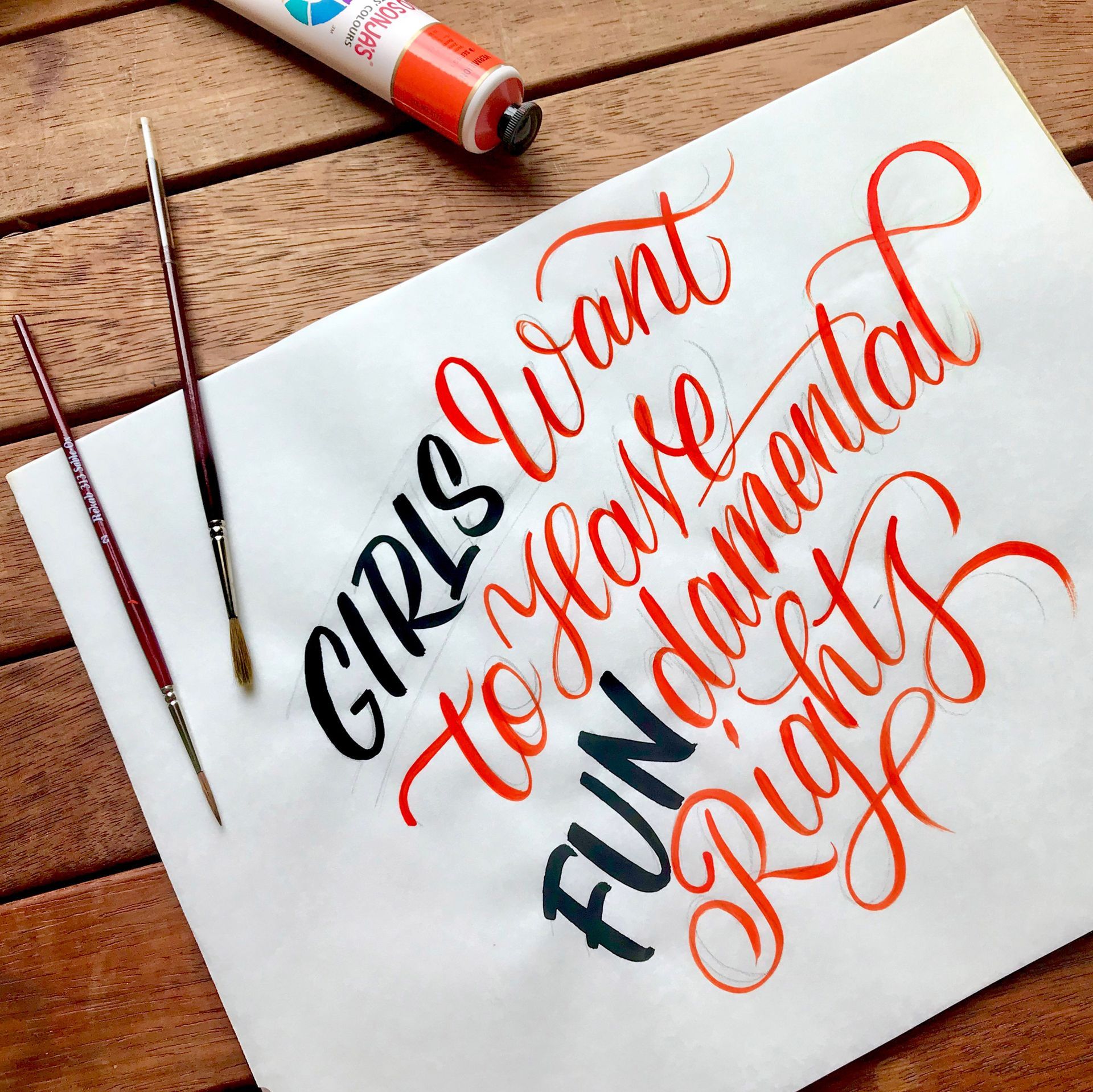
5.4 Intro to Copperplate Calligraphy Tutorial
STUDENTs'
Testimonials
Maria is a great teacher! She is skilled at what she does and teaches in a simple, encouraging and easy to access manner. I did the online Copperplate course delivered over 8 hours on 4 Sunday mornings ( 2 hours per lesson). Best use of a Sunday morning during lockdown! I highly recommend the course to anyone who is interested in Copperplate calligraphy.
⋆⋆⋆⋆⋆
Georgee Dyer
Maria is an excellent teacher of copperplate calligraphy. I have done three online workshops with her so far and thoroughly enjoyed all of them. She is very patient and explains everything so well. I would recommend her classes to anyone interested in learning copperplate calligraphy.
⋆⋆⋆⋆⋆
Susana Smith
I loved learning Neuland from Maria Montes, she taught so well, and while she did the usual drills-ductus-words sequence that many calligraphy teachers do, she also added variations and the history of the script! Maria is very talented, and a detailed and patient teacher. I thoroughly enjoyed my classes with her, and look forward to more opportunities to learn from her.

